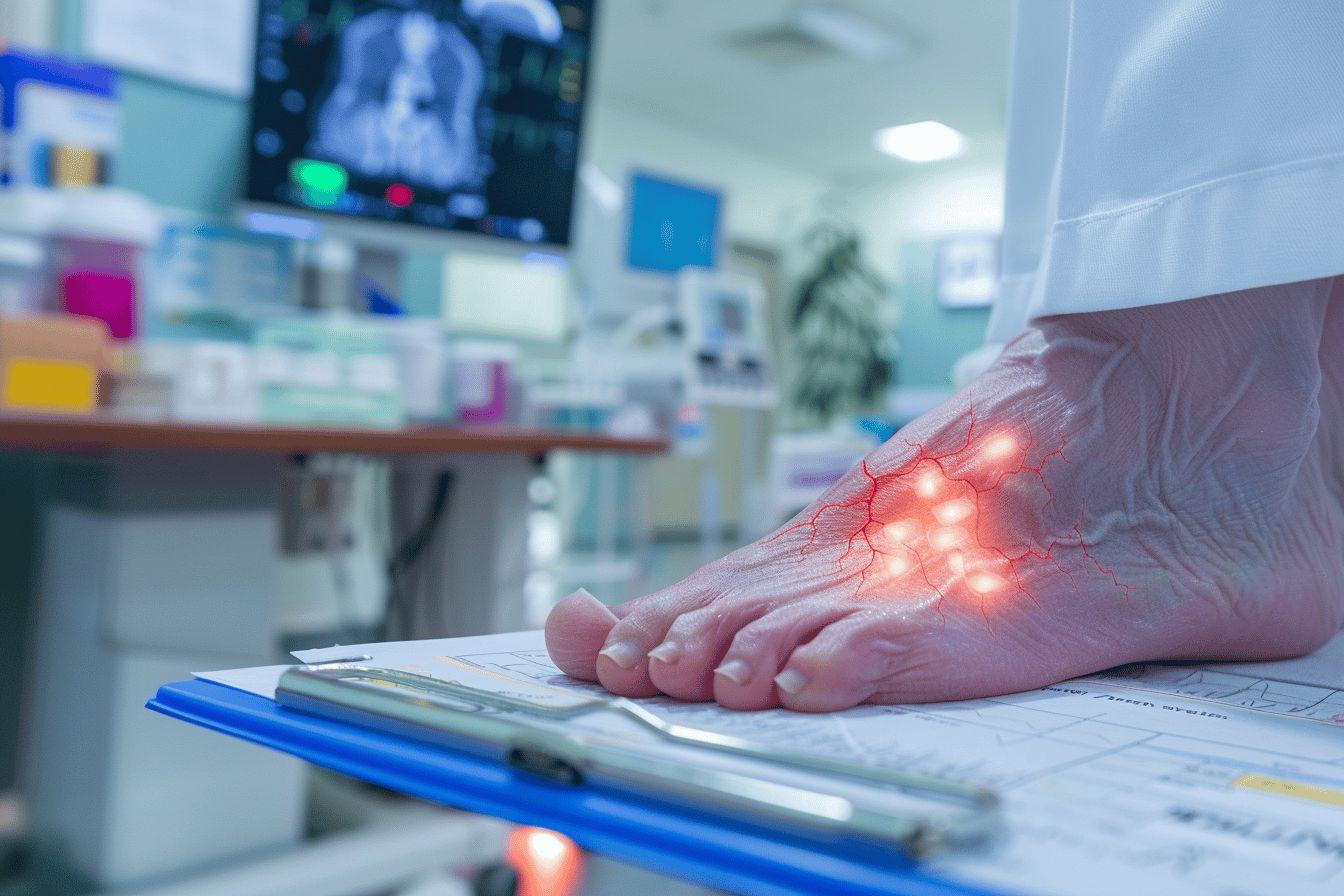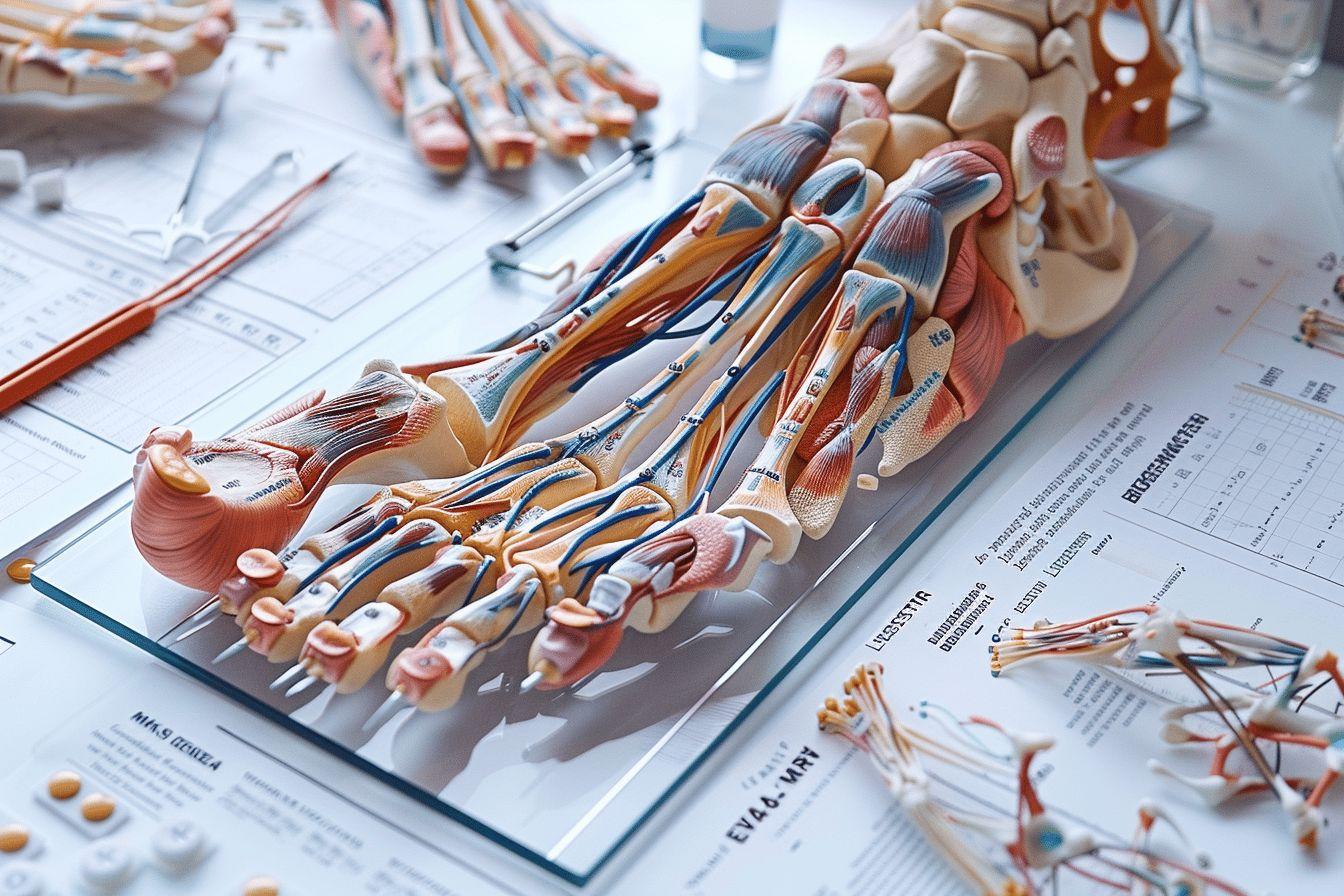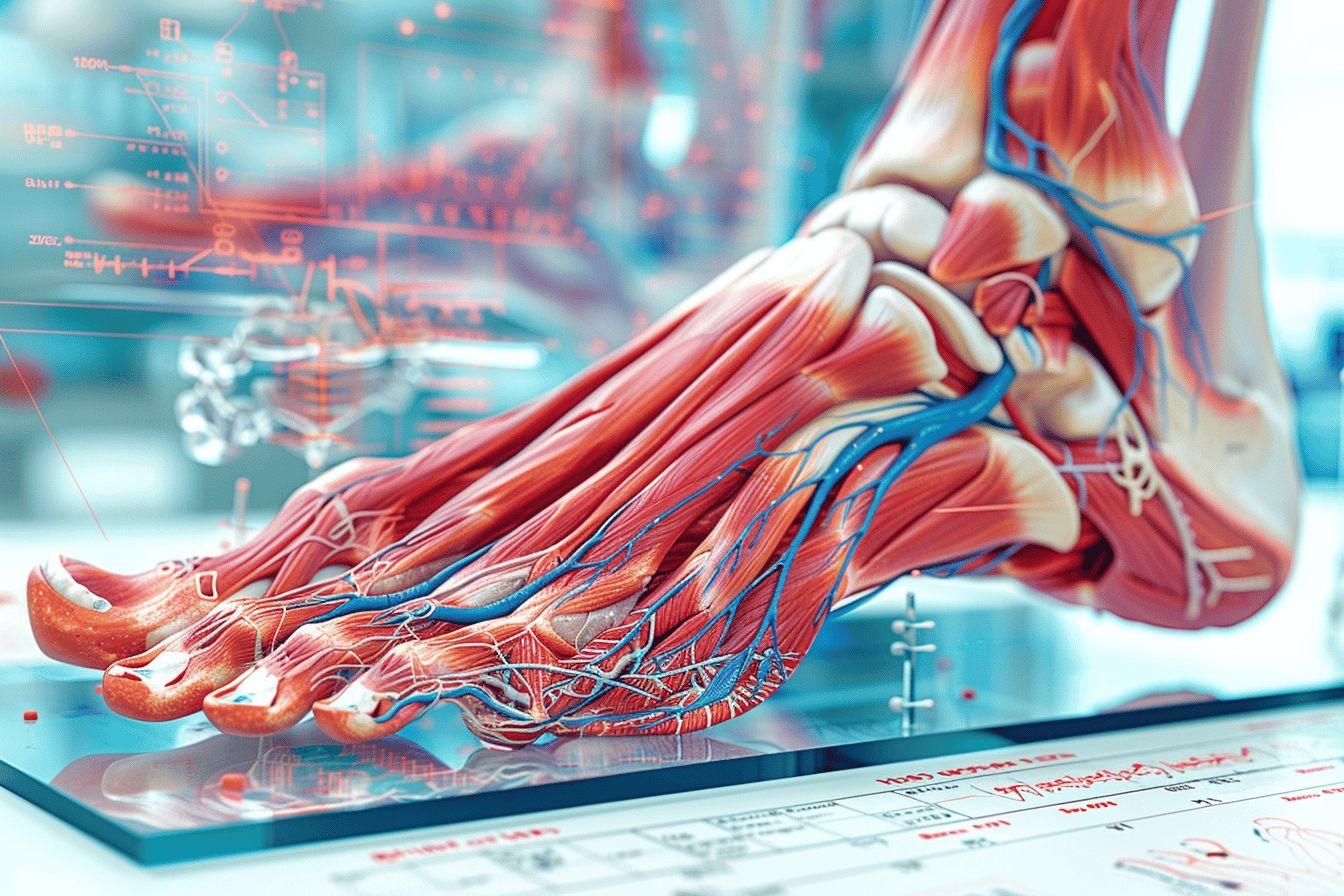Article at a glance
Tingling in the left foot can have a variety of causes and often requires specific solutions.
- Multiple causes: circulatory problems, nerve compression, diabetic neuropathy, or vitamin deficiencies
- Associated symptoms: numbness, neuropathic pain, and discoloration of the foot
- Effective treatments: posture correction, self-massage, vitamin supplementation, and regular exercise
- A medical consultation is required if symptoms persist or worsen
Tingling in the left foot is an unpleasant sensation that many people experience at some point in their lives. This sensation, often described as pins and needles, numbness, or the feeling of insects crawling under the skin, can occur for a variety of reasons. Understanding the causes and associated symptoms allows for better identification of the problem and the adoption of the most appropriate treatments to relieve this discomfort, which can sometimes become debilitating in daily life.
Main causes of tingling in the left foot
Tingling in the left foot can have many different causes, ranging from simple posture problems to more serious medical conditions. The specific location on the left foot is not always significant in itself, but can sometimes guide the diagnosis.
Circulatory problems are a common cause of this paresthesia. When blood flow to the left foot is reduced or disrupted, tingling may occur. Tingling in the left foot related to circulation can result from arteriosclerosis, Raynaud's disease, or simply prolonged sitting with the legs crossed.
Nerve compression is also a major cause. The sciatic nerve, when compressed, can cause tingling that travels down the foot. Similarly, tarsal tunnel syndrome can create this unpleasant sensation in the sole of the foot and toes.
Other potential causes include:
- Diabetic neuropathy, particularly common in people with poorly controlled diabetes
- Vitamin deficiencies, particularly B12, B6, or magnesium
- Multiple sclerosis, which can affect the transmission of nerve signals
- Direct trauma to the foot or leg
- Certain medications with neurological side effects
Note that persistent unexplained tingling in the left foot, especially when accompanied by other symptoms, should prompt a consultation with a healthcare professional for a precise diagnosis.

Symptoms Associated with Tingling in the Left Foot
Tingling in the left foot is often accompanied by other symptoms that can help determine the underlying cause. Although the tingling sensation is the primary symptom, the intensity and exact nature of the sensations can vary considerably from person to person.
Pain may also occur, ranging from mild throbbing to intense burning sensations. This neuropathic pain tends to intensify at night or after long periods of immobility.
Changes in foot color or temperature are other signs to watch for. A cold, pale, or reddish foot may indicate an underlying circulatory problem contributing to the tingling.
The following table lists the main associated symptoms according to the potential causes:
| Cause | Associated Symptoms |
|---|---|
| Nerve Compression | Pain radiating along the nerve pathway, muscle weakness |
| Circulatory Problem | Cold foot, discoloration, pain when walking |
| Diabetic Neuropathy | Burning sensations, hypersensitivity, nighttime pain |
| Vitamin Deficiency | General fatigue, muscle weakness, irritability |
The frequency and timing of tingling are also important diagnostic clues. Tingling that occurs primarily in the morning may suggest an inappropriate sleeping position compressing certain nerves, while tingling that appears after exercise could indicate a vascular problem.
Effective Solutions and Treatments to Relieve Tingling
When dealing with tingling in the left foot, several therapeutic approaches can be considered depending on the identified cause. The main goal is to relieve symptoms while treating the underlying problem to prevent the tingling from becoming chronic.
For mechanical causes such as poor posture or nerve compression, simple changes can provide significant relief. Avoiding crossing your legs for long periods, wearing proper shoes with good arch support, and practicing regular stretching can significantly reduce discomfort.
Self-massage techniques are also an effective solution. Gently massaging the affected foot using circular motions with your thumbs can improve circulation and temporarily relieve tingling.
Here are the steps for a progressive treatment:
- Identify and eliminate the cause (if possible)
- Apply immediate relief methods (massage, foot elevation)
- Introduce medium-term lifestyle changes
- Consult a specialist if symptoms persist
- Follow prescribed medical treatment if necessary
In cases related to nutritional deficiencies, B vitamin supplementation and magnesium may be beneficial. These nutrients play a crucial role in nerve health, and a deficiency can cause tingling.
For circulatory problems, regular exercise, particularly walking, helps stimulate blood flow in the lower limbs. Short but regular sessions generally produce better results than intense but sporadic sessions.
If tingling persists despite these measures or is accompanied by significant pain, a medical consultation is necessary. A doctor may prescribe specific medications such as anti-inflammatories, low-dose antidepressants (effective against neuropathic pain), or anticonvulsants, depending on the identified cause.





Leave a comment
This site is protected by hCaptcha and the hCaptcha Privacy Policy and Terms of Service apply.